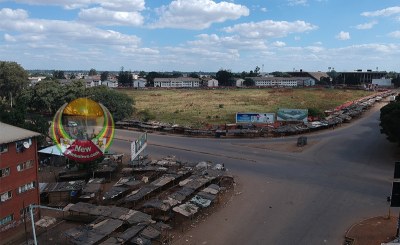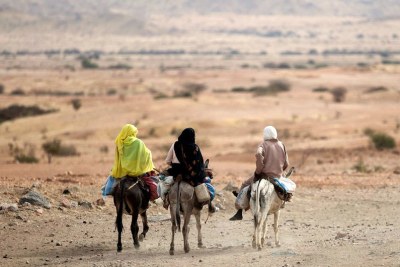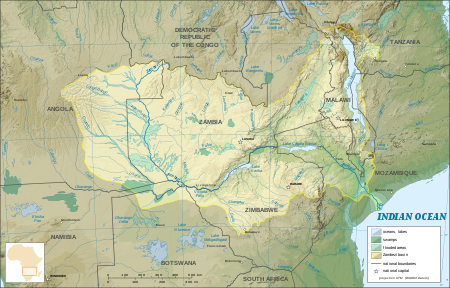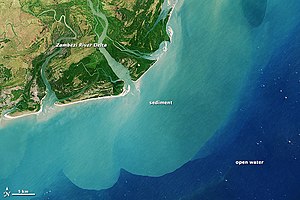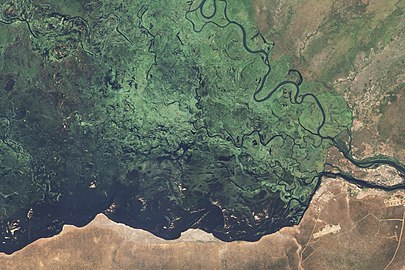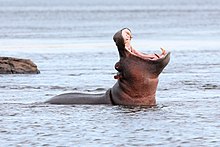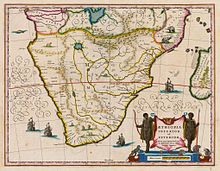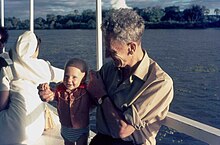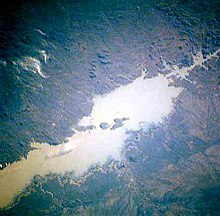Κάθε φορά που ακούμε ότι ένας ακόμη λιμός ξέσπασε σε κάποια περιοχή του Τρίτου Κόσμου, η πρώτη αιτία που μας έρχεται στο μυαλό είναι η "ξηρασία".
Στην "ξηρασία" αποδίδουν πολλά μέσα ενημέρωσης και την επικείμενη λιμοκτονία στη νοτιότερη Αφρική, ενώ στην πρόσφατη Σύνοδο Κορυφής του Παγκόσμιου Οργανισμού Τροφίμων και Γεωργίας (FAO) που πραγματοποιήθηκε στη Ρώμη από την 10η μέχρι τη 13η Ιουνίου, οι ΗΠΑ πρότειναν, ως μόνη σωτηρία για τους φτωχούς επί της γης, την εξάπλωση των καλλιεργειών μεταλλαγμένων τροφίμων, ανθεκτικών (μεταξύ άλλων και) στην ξηρασία.
Η ερμηνεία αυτή αποτελεί φυσικά μια απλούστευση, που συχνά υποκρύπτει άπληστα συμφέροντα. Και στον πλούσιο Βορρά έρχονται συχνά φοβερές φυσικές καταστροφές, συμφορές που καταστρέφουν τη σοδειά ενός ή δύο χρόνων, αλλά δεν προκαλούν λιμούς. Τα τρόφιμα εισάγονται από κάπου αλλού, οι παραγωγοί διεκδικούν κάποιες αποζημιώσεις, και αυτό είναι όλο.
Το πρώτο συμπέρασμα επομένως είναι ότι οι λιμοί δεν οφείλονται στις ξηρασίες, αλλά (όπως περιμέναμε) στη φτώχεια. Ούτε οι κυβερνήσεις, ούτε βέβαια οι αγρότες των φτωχών χωρών διαθέτουν τα κεφάλαια να ξεπεράσουν μια φυσική καταστροφή, αγοράζοντας τρόφιμα και βρίσκοντας τα μέσα να τα μεταφέρουν εκεί όπου υπάρχει ανάγκη.
Ούτε άλλωστε λείπουν τα τρόφιμα ή οι εκτάσεις για καλλιέργεια. Πρόσφατη είναι η εμπειρία στη χώρα μας από τις χωματερές τροφίμων, ενώ είναι γνωστό ότι οι (απέραντες) εκτάσεις που αποδίδονται στην κτηνοτροφία αποδίδουν το ένα δέκατο των πρωτεϊνών που παράγουν εκτάσεις φυτεμένες με φυτικά τρόφιμα.
Από που θα βρεθούν όμως τα απαραίτητα κεφάλαια; Αναγκαστικά από τις εξαγωγές των γεωργικών προϊόντων που ζητά ο πλούσιος Βορράς, όπως τσάι, κακάο, καφέ, βαμβάκι, ζάχαρη, κτηνοτροφές, τροπικά φρούτα, καπνό, ναρκωτικά, δηλαδή αγαθά με μικρή ή αρνητική συμβολή στη διατροφή ενός πληθυσμού.
Για να είναι αποδοτική οικονομικά μια τέτοια καλλιέργεια πρέπει να γίνεται με τη μέθοδο της φυτείας, δηλαδή της απέραντης μονοκαλλιέργειας, με ιδιοκτήτη συνήθως δυτικοευρωπαίο ή κάποια εταιρεία. Εκεί λοιπόν που κάποτε αραιοί πληθυσμοί γεωργών και κτηνοτρόφων ζούσαν σε αυτάρκεια με ότι παράγει η γη, τώρα ακτήμονες εργάτες δουλεύουν στις φυτείες για (ελάχιστα) χρήματα, με τα οποία αγοράζουν την τροφή τους που έρχεται από μακριά, ακόμη και από τον αναπτυγμένο Βορρά (αλεύρι, ρύζι και φτηνά προϊόντα της βιομηχανίας τροφίμων όπως μαργαρίνη, γάλα σκόνη, γαριδάκια, ζαχαρωτά κλπ).
Όσο υπάρχει δουλειά (και επομένως λεφτά για αγορά τροφής), ο πληθυσμός πολλαπλασιάζεται ανεξέλεγκτα. Όταν έρθει η κρίση, λόγω της μείωσης των εξαγωγών ή κάποιας φυσικής καταστροφής, οι άνθρωποι πεθαίνουν κατά εκατομμύρια, μια και τα όποια μικρά χωράφια τους έχουν τυχόν απομείνει δεν επαρκούν για να θρέψουν όλο τον πληθυσμό (χωράφια τα οποία από την υπερεκμετάλλευση έχουν άλλωστε μείνει γυμνά και άγονα).
 Αυτό
το φαύλο μοντέλο "ανάπτυξης" επιβλήθηκε φυσικά δια της βίας, σε εποχές
που στα ιστορικά βιβλία περιγράφονται ως "εκπολιτισμός" των ιθαγενών
στην Αφρική, την Αμερική και την Αυστραλία. Περιλάμβανε κατάσχεση της
γης, σφαγές και κλοπές κοπαδιών, κεφαλικό φόρο σε χρήμα, υποχρεωτικό
εκχρηματισμό των ανταλλαγών, στρατόπεδα εργασίας, ακόμη και θρησκευτική
προπαγάνδα για τα καλά της (έμμισθης) εργασίας.
Αυτό
το φαύλο μοντέλο "ανάπτυξης" επιβλήθηκε φυσικά δια της βίας, σε εποχές
που στα ιστορικά βιβλία περιγράφονται ως "εκπολιτισμός" των ιθαγενών
στην Αφρική, την Αμερική και την Αυστραλία. Περιλάμβανε κατάσχεση της
γης, σφαγές και κλοπές κοπαδιών, κεφαλικό φόρο σε χρήμα, υποχρεωτικό
εκχρηματισμό των ανταλλαγών, στρατόπεδα εργασίας, ακόμη και θρησκευτική
προπαγάνδα για τα καλά της (έμμισθης) εργασίας.
Ποτέ όμως δεν τους επιτράπηκε μια αυτοδύναμη ανάπτυξη δυτικού τύπου, πέρα από το μοντέλο: μας πουλάτε φτηνά γεωργικά προϊόντα και πρώτες ύλες και αγοράζετε από εμάς ακριβά βιομηχανικά αγαθά. Έτσι στάθηκε αδύνατη η ανάπτυξη εναλλακτικών πηγών πλούτου, πέρα από τις μονοκαλλιέργειες, καθώς ακόμη και τα πλούσια ορυκτά κοιτάσματα αρπάχτηκαν από πολυεθνικές εταιρείες (οι οποίες και σήμερα δεν διστάζουν να εξοπλίσουν και να χρηματοδοτήσουν μια ομάδα αντικυβερνητικών μισθοφόρων, αν η κυβέρνηση δείξει "σοσιαλιστικές" διαθέσεις).
Τελευταίο παράδειγμα αυτής της στάσης, ο βομβαρδισμός ενός εργοστασίου φαρμάκων στο Σουδάν από τις ΗΠΑ, σε συνδυασμό με τη σθεναρή υπεράσπιση του δικαιώματος της πατέντας από τις μεγάλες φαρμακοβιομηχανίες, τακτική που εμποδίζει τις φτωχές χώρες να παράγουν μόνες τους φτηνά τα φάρμακα που τόσο χρειάζονται.
Στο κλίμα αυτό, οι αφρικανοί ηγέτες ζήτησαν, στη Σύνοδο Κορυφής, να απελευθερωθούν οι αγορές για να ανταγωνιστούν οι καλλιεργητές των φτωχών χωρών τις επιδοτούμενες καλλιέργειες των πλουσίων. Ζητούν δηλαδή απλά να τηρηθεί ο διεθνής παραγωγικός καταμερισμός που η ίδια η Δύση επέβαλε. Μερικοί τολμηροί, όπως ο Μουγκάμπε στη Ζιμπάμπουε, τολμούν να μιλούν ακόμη και για αναδασμό της γης, ρισκάροντας μια διεθνή καταδίκη.
Δεν θα εισακουστούν στο παραμικρό, όσο δεν έχουν κάποιο μέσο για να απειλήσουν. Δεν είναι άλλωστε τυχαίο ότι από τη Σύνοδο Κορυφής του FAO οι περισσότερες πλούσιες χώρες απουσίασαν, με την εξαίρεση της (διοργανώτριας) Ιταλίας και της Ισπανίας.
Έτσι, η Ευρώπη θα συνεχίσει να επιδοτεί τα τρόφιμά της τα γεμάτα χημικά, ενώ οι ΗΠΑ θα συνεχίσουν την προσπάθεια για μονοπώληση της τεχνογνωσίας των μονοκαλλιεργειών, μέσω (και) των μεταλλαγμένων. Όσο για τις εκατοντάδες τα εκατομμύρια των απελπισμένων ανθρώπων αυτού του κόσμου, ήδη αρχίσαμε να χτίζουμε τα τείχη που θα τους κρατήσουν απέξω.
Εν τούτοις, πολλές περιβαλλοντικές και αναπτυξιακές οργανώσεις πιστεύουν ότι υπάρχουν εναλλακτικές λύσεις, και καταγγέλλουν ότι ο μονόπλευρος νεο-φιλελευθερισμός αλλά και ο αυταρχισμός των αναπτυγμένων χωρών, δημιουργούν ένα ασταθές διεθνές σύστημα που δεν μπορεί να διαρκέσει. Προτείνουν να ενισχυθούν οι φτωχές χώρες ώστε να αναπτύξουν πολλές διαφορετικές οικονομικές δραστηριότητες, αντί για την αποκλειστική ενασχόληση με τις εξαγωγές πρώτων υλών, και παράλληλα να τους επιτραπεί κάποιος βαθμός ελέγχου της εθνικής τους οικονομίας, αντί να υποχρεώνονται να ανοίξουν διάπλατα τις πόρτες τους στο συντριπτικό διεθνές εμπόριο.
Ας σημειώσουμε επίσης ότι σε πολλές ευρωπαϊκές χώρες ο καταναλωτής έχει σήμερα τη δυνατότητα να αγοράσει προϊόντα "δίκαιου εμπορίου", που προέρχονται είτε κατευθείαν από τον παραγωγό, είτε από κάποια εταιρεία που έχει αναλάβει την υποχρέωση να αμείβει ικανοποιητικά τους εργάτες της. Πρέπει να θυμόμαστε πως η καταναλωτική μας συμπεριφορά επηρεάζει τις ζωές πολλών ανθρώπων. Ο καθένας μπορεί να τηρεί κάποιες απλές αρχές, όπως να καταναλώνει λιγότερο κρέας ή να μην αγοράζει προϊόντα διαβόητων για την απανθρωπιά τους πολυεθνικών όπως Νεστλέ, Μοσάντο (μεταλλαγμένα), Σελλ (πετρελαιοειδή) κλπ.
Ακόμη θα πρέπει να θυμηθούμε ότι η Ελλάδα, χώρα σχετικά πλούσια, και κατεξοχήν αποδέκτης οικονομικών ενισχύσεων, δεν φημίζεται για τη βοήθεια που προσφέρει σε φτωχές χώρες. Τέλος, κάποτε πρέπει να γίνει συνείδηση ότι η συνεχιζόμενη επιδότηση των βιομηχανικών μονοκαλλιεργειών στην Ελλάδα δεν οδηγεί πουθενά, και ότι η χώρα μας πρέπει να στραφεί προς τις ποιοτικές καλλιέργειες (επώνυμα προϊόντα) και τη βιολογική γεωργία μάλλον, παρά να επιδιώκει να ανταγωνιστεί, υπό την κάλυψη των ενισχύσεων της Ε.Ε., χώρες με πολύ μεγαλύτερες πεδινές εκτάσεις, πολύ φθηνότερα εργατικά χέρια, οι οποίες έχουν πολύ περισσότερο ανάγκη αυτό το εισόδημα.
Υ.Γ. Διαβάστε ακόμη το άρθρο της ΚΑΘΗΜΕΡΙΝΗΣ "Mια παγκόσμια διατροφική κρίση" (16/6), όπου η "κουλτούρα του κρέατος" του αναπτυγμένου κόσμου, αποδεικνύεται ως μία από τις βασικές αιτίες για την πείνα των φτωχών.
Μεταξύ άλλων μαθαίνουμε ότι την περίοδο του μεγάλου λιμού του 1984, καθώς χιλιάδες άτομα πέθαιναν καθημερινά από την πείνα, η Αιθιοπία καλλιεργούσε λιναρόσπορο και ελαιοκράμβη, που εξάγονταν ως ζωοτροφές στη Βρετανία και άλλες ευρωπαϊκές χώρες.
Tο 80% των παιδιών που υποσιτίζονται ζουν σε χώρες που έχουν πλεόνασμα γεωργικών προϊόντων, το οποίο συχνά αποτελείται από ζωοτροφές (αυτή είναι και μία από τις βασικές απαντήσεις στα φληναφήματα περί μεταλλαγμένων προϊόντων εναντίον της πείνας).










